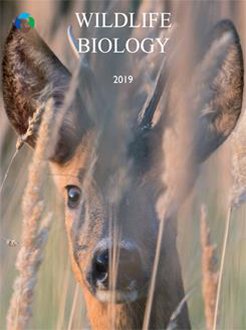The endangered Amur tiger Panthera tigris altaica is confined primarily to a narrow area along the border with Russia in northeast China. Little is known about the foraging strategies of this small subpopulation in Hunchun Nature Reserve on the Chinese side of the border; at this location, the prey base and land use patterns are distinctly different from those in the larger population of the Sikhote-Alin Mountains of Russia. Using dietary analysis of scats and camera-trapping data from Hunchun Nature Reserve, we assessed spatiotemporal overlap of tigers and their prey and identified prey selection patterns to enhance understanding of the ecological requirements of tigers in northeast China. Results indicated that wild prey constituted 94.9% of the total biomass consumed by tigers; domestic livestock represented 5.1% of the diet. Two species, wild boar Sus scrofa and sika deer Cervus nippon, collectively represented 83% of the biomass consumed by tigers. Despite lower spatial overlap of tigers and wild boar compared to tigers and sika deer, tigers preferentially preyed on boar, likely facilitated by high temporal overlap in activity patterns. Tigers exhibit significant spatial overlap with sika deer, likely favoring a high level of tiger predation on this large-sized ungulate. However, tigers did not preferred roe deer Capreolus pygargus and showed a low spatial overlap with roe deer. Overall, our results suggest that tiger prey selection is determined by prey body size and also overlap in tiger and prey use of time or space. Also, we suggest that strategies designed to minimize livestock forays into forested lands may be important for decreasing the livestock depredation by tigers. This study offers a framework to simultaneously integrate food habit analysis with the distribution of predators and prey through time and space to provide a comprehensive understanding of foraging strategies of large carnivores.
How to translate text using browser tools
8 July 2019
Prey selection of Amur tigers in relation to the spatiotemporal overlap with prey across the Sino–Russian border
Hailong Dou,
Haitao Yang,
James L. D. Smith,
Limin Feng,
Tianming Wang,
Jianping Ge

Wildlife Biology
Vol. 2019 • No. 1
2019
Vol. 2019 • No. 1
2019
activity patterns
Amur tiger
camera traps
food habits
scat analysis





